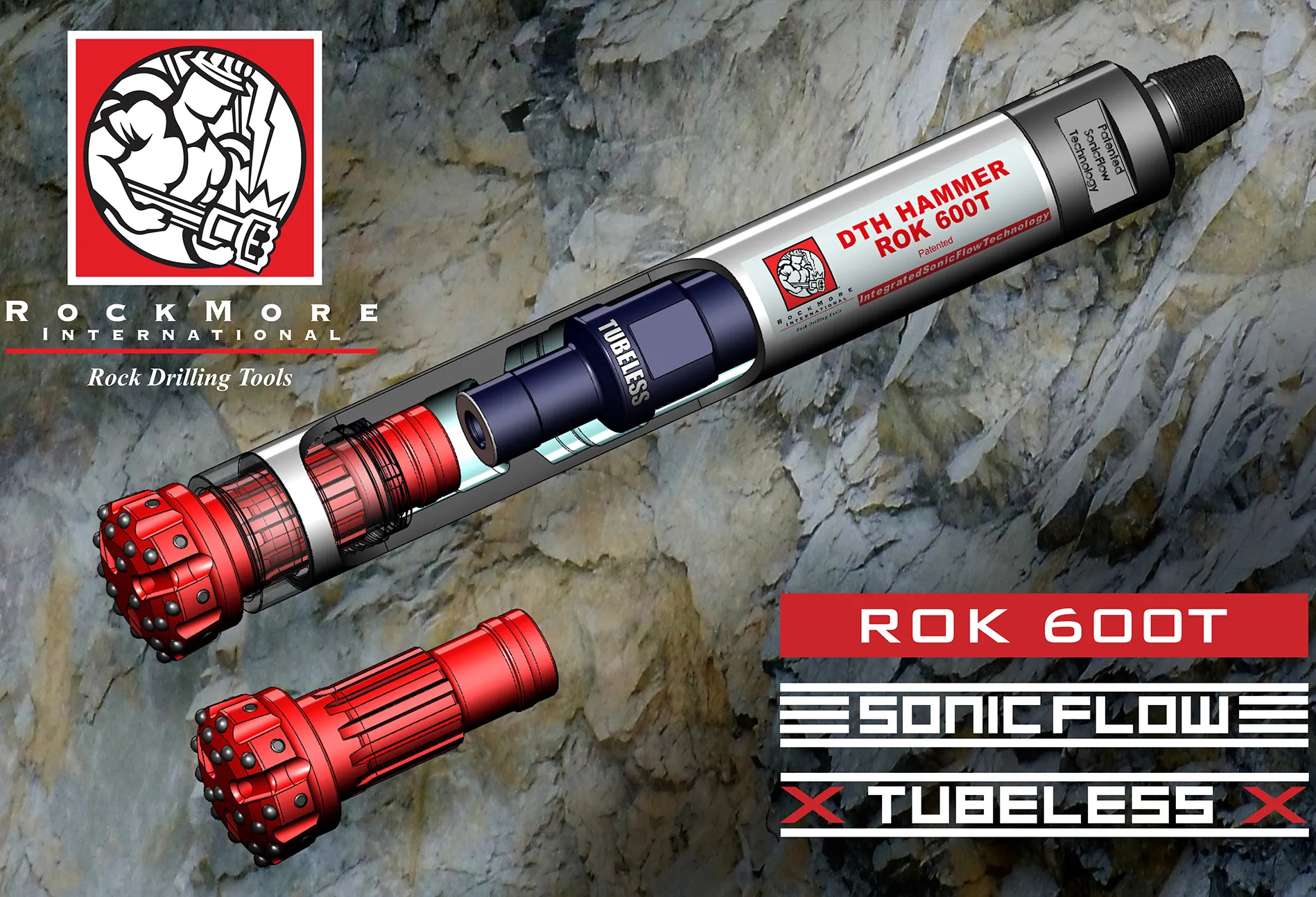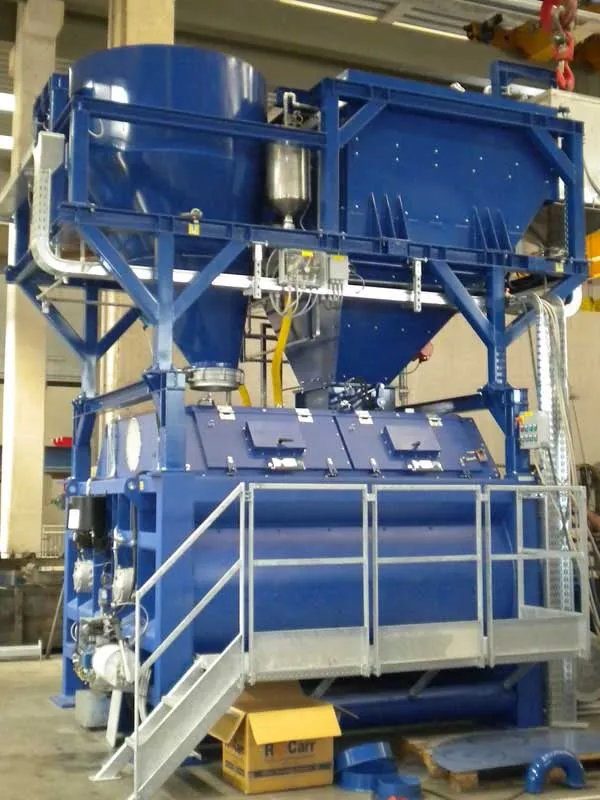Global manufacturer of percussive rock drilling tools, Rockmore International, is to officially introduce its new T series DTH hammer line in Europe, and the first model in this class the ROK 600T.
The company says that the addition to its existing broad range of DTH hammers is “a breakthrough for DTH drilling technology for mining, construction, and water-well applications.”
The ROK 600T is a six inch (152.4mm) class model with high performance drilling characteristics rated for drilling 155-178mm diamet
January 6, 2017
Read time: 2 mins

Global manufacturer of percussive rock drilling tools, 5087 Rockmore International, is to officially introduce its new T series DTH hammer line in Europe, and the first model in this class the ROK 600T.
The company says that the addition to its existing broad range of DTH hammers is “a breakthrough for DTH drilling technology for mining, construction, and water-well applications.”
The ROK 600T is a six inch (152.4mm) class model with high performance drilling characteristics rated for drilling 155-178mm diameter holes for blast-hole applications in mining and construction. It is also suitable for water-well drilling.
As a T series design feature, the ROK 600T accepts the industry-established bit shank model QL60, but with the blow tube/foot valve removed. Rockmore says that the elimination of this plastic part associated with the drill bit “offers various technical and economic advantages.”
Rockmore’s patented SonicFlow technology on the new hammer optimises airflow by simplifying and streamlining the air paths to minimise backflow and turbulence, thus delivering more energy to the piston.
“We recognised a trending demand in the DTH drilling sector for a high performance DTH tool that could utilise industry standard drill bits without plastic components in order to increase reliability yet not compromise drilling efficiency,“ says Pejman Eghdami, executive vice president of Rockmore International.
The company says that the addition to its existing broad range of DTH hammers is “a breakthrough for DTH drilling technology for mining, construction, and water-well applications.”
The ROK 600T is a six inch (152.4mm) class model with high performance drilling characteristics rated for drilling 155-178mm diameter holes for blast-hole applications in mining and construction. It is also suitable for water-well drilling.
As a T series design feature, the ROK 600T accepts the industry-established bit shank model QL60, but with the blow tube/foot valve removed. Rockmore says that the elimination of this plastic part associated with the drill bit “offers various technical and economic advantages.”
Rockmore’s patented SonicFlow technology on the new hammer optimises airflow by simplifying and streamlining the air paths to minimise backflow and turbulence, thus delivering more energy to the piston.
“We recognised a trending demand in the DTH drilling sector for a high performance DTH tool that could utilise industry standard drill bits without plastic components in order to increase reliability yet not compromise drilling efficiency,“ says Pejman Eghdami, executive vice president of Rockmore International.








